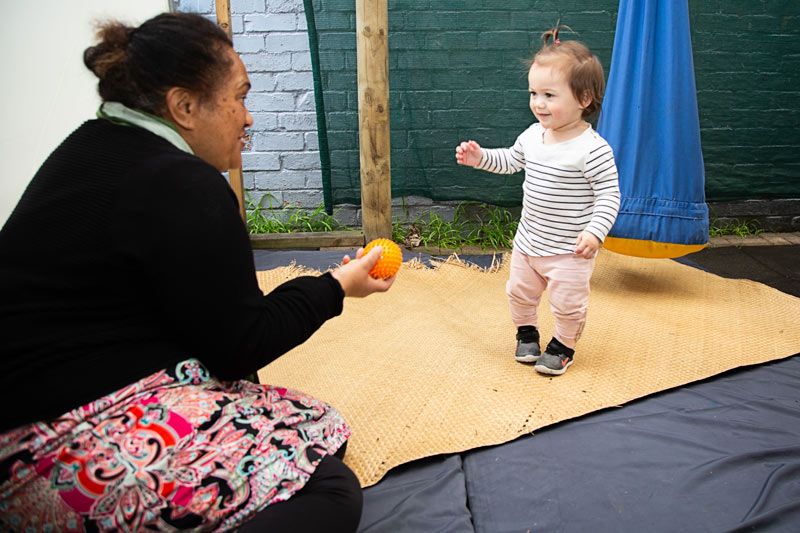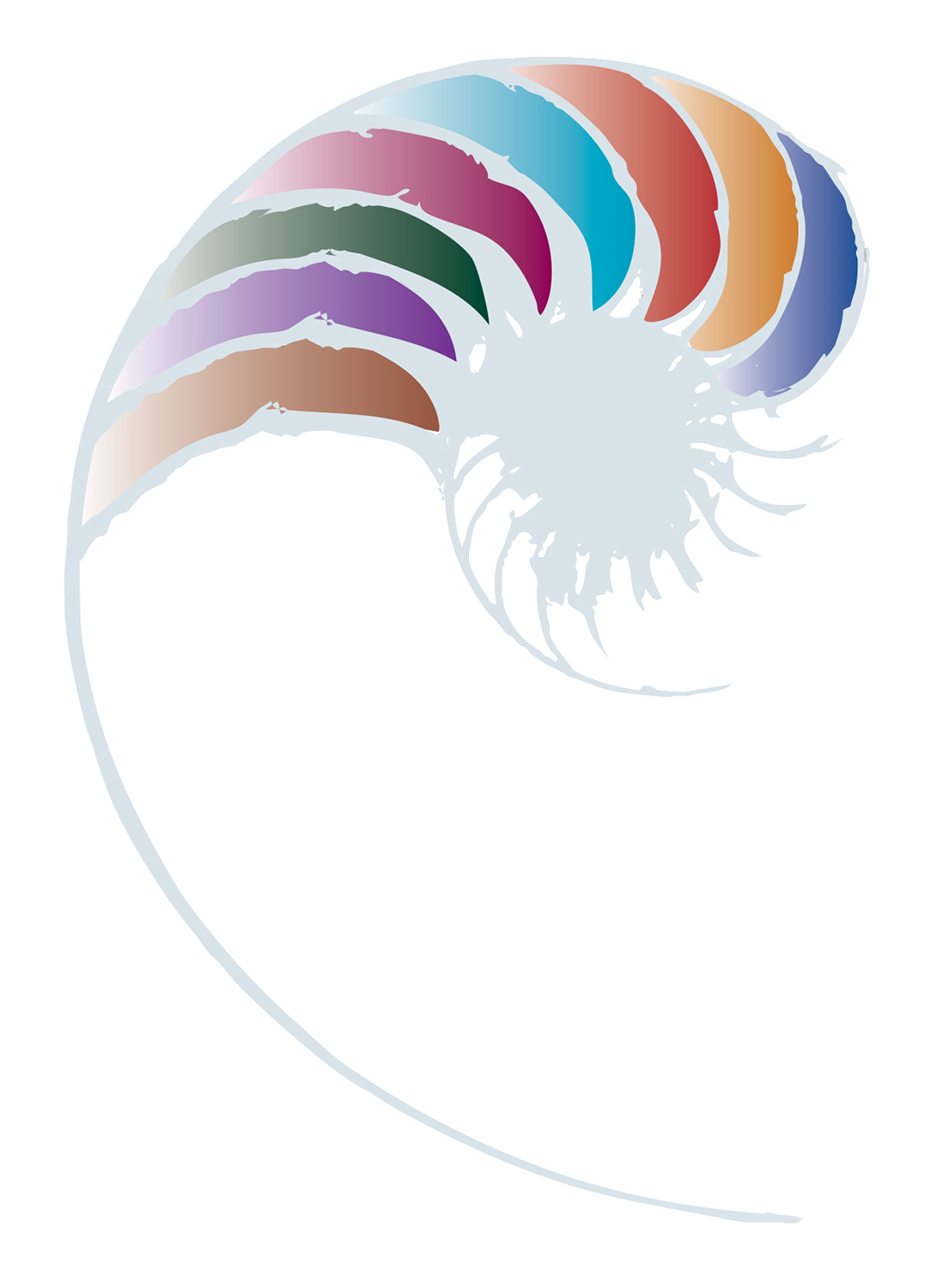Te akiaki i te kōrerorero
Encouraging conversations
This resource informs kaiako (teachers) about practices such as serve and return and learning through play, which encourages and initiates conversations with children. This resource is part of the Talking together, Te kōrerorero suite of resources. See the resource carousel below for more.

"Conversation is the most powerful tool for communicating our understanding, ideas, feelings, and confusions with each other."1 - Lisa Burman
While children are born with an innate ability to communicate, the art of conversation requires a lot of learning and practice.
Serve and return
Serve and return is what tennis players do to keep a game going. It is also a metaphor scientists to describe the back and forth interactions that take place between adults and children in conversations. Knowing how and when to take turns is the first step in learning to converse with others.
Taking turns in conversation is vital when so many new brain connections are forming. Turn-taking is more important than the total number of words adults use with children. This is because talking with children rather than talking at children gives them a chance to use their new sounds, words, and sentences.
With infants and toddlers, sometimes their serve will be a gesture, glance, or kick of their legs. Build your response on the ways infants communicate, especially through tone of voice and facial expressions.
When kaiako name and talk about what children are already looking at or playing with, children learn new words and concepts much faster than if kaiako redirect their attention to a new object. Allow wait time. Like adults, children often need time to process their response. If they feel under pressure, they are less likely to continue the turn-taking talk.
To help children learn the back and forth pattern of a conversation include games that involve turn-taking such as Mili mili pati ā (Samoan chant), peek-a-boo, or I spy.
As the kaiako, you will be the one who puts the work in to extend the conversation. Children will let you know when they’re finished.
An example of serve and return
Infant SERVE: (Points to a ball.)
Kaiako RETURN: That’s a ball!
Infant RETURN: Baah
Kaiako RETURN: A big ball!
Infant RETURN: Baah
Kaiako RETURN: Let’s roll the ball. (Kaiako rolls ball to toddler.)
Remembering together at kai times and during care rituals
Valuing conversation means valuing times when tamariki can talk to each other as well as kaiako. Kai time can be particularly good for the back and forth – serve and return – pattern of conversations because it is when tamariki are less likely to be moving around. This is why it is important that kai times and care rituals are not rushed and kaiako can sit with tamariki.
Be mindful of diverse cultural practices around kai and talk.
- Start and support talk about shared experiences. “Remember when we ... ”
- Start and support talk about events coming up. “I have got an idea for this afternoon, what do you think if we were to ... ”.2
- Tell or start a story and invite tamariki to add to it.
- Make sure that quieter tamariki get a chance to participate.
Story of practice: Katakata (laughter) in serve and return
Kaiako in a home-based service were introduced to the idea of serve and return, the importance of noticing and acknowledging these conversations, and the multiple ways of initiating and sustaining the serve and return.
A home-based coordinator recorded a kaiako engaged in non-verbal interactions with a three-month-old infant, using gestures and facial expressions as well as te reo Māori.
The kaiako exaggerated his response to an infant’s smile with a gentle, “Ahh pēpi.” He grinned, raised his eyebrows, and waited. Initially puzzled, the infant then replied with delight. Her whole body wriggled as she understood that her utterances were acknowledged. In response to the wriggling the kaiako said, “Katakata. Āe, katakata.” The infant put her head back and laughed, returning the kōrero. She waited, expectantly, for the kaiako to return the conversation. The conversation went back and forth for nearly a minute, strengthening the relationship between kaiako and infant and establishing a means of communication – laughter.
Oral language development during play
Play is where a lot of language is learnt and practised in conversations. This is why having frequent opportunities for uninterrupted play is so strongly advocated for in early learning settings.
Tamariki tend to interact differently with peers and kaiako and both offer good language learning opportunities. Making sure there is a balance between times when kaiako join in the play and when pēpi and tamariki are able to interact freely with one another is all part of curriculum design and planning.
You can use a range of strategies to build vocabulary and communication when you join in the play. Some examples are:
- setting up interactions for success by positioning yourself to maximise seeing and hearing for tamariki and you – see serve and return above
- modelling gestures, sounds, and words
- extending thinking and refining language by introducing wonderings such as “what if ...?, “me aha ...?”
- bringing the past and the future into the conversation, such as “remember when ... ?
- encouraging tamariki to lead interactions.

- Burman, L. (2008). Are you listening? Fostering conversations that help young children learn. Minnesota: Redleaf Press.
- Reese, E. (2013). Tell me a story: Sharing stories to enrich your child's world. New York, NY: Oxford University Press.
National Scientific Council on the Developing Child (2004). Young children develop in an environment of relationships: Working paper no. 1. Cambridge, MA: Center on the Developing Child at Harvard University.
- Brain architecture and serve and return
Explanation of the brain architecture and why serve and return interactions are important in the developmental process. - Conversation – not word dump – boosts children's brains
A joint Harvard–MIT study has found that it's more important to engage young children in back-and-forth conversation for developing their language skills, rather than just learning new vocabulary.
This study finds it is important for new vocabulary to be introduced in meaningful and authentic contexts through conversations. For kaiako this means spending longer periods of time engaging with infants and toddlers, having sustained serve and return.
Research article: Romeo, R. R, Leonard, J. A., Robinson, S. T., West, M. R., Mackey, A. P., Rowe, M. L. & Gabrieli, J. D. E. (2018, February 14). Beyond the 30-million-word gap: Children's conversational exposure is associated with language related brain function. Psychological Science, volume 29, issue 5, 700-710. - Five steps for brain-building serve and return
About this resource
This section from Te kōrerorero Talking together provides guidance for kaiako about practices such as serve and return and learning through play, which encourages and initiates conversations with children. See the resource carousel for more.



